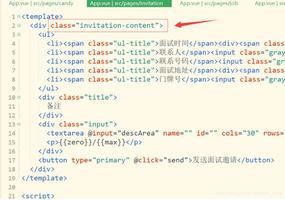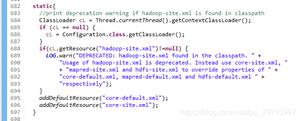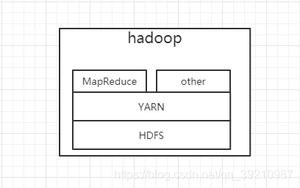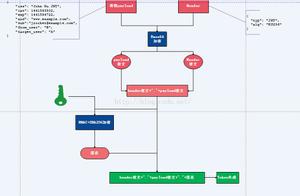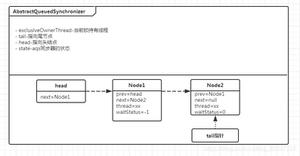自己实现 一个 Vue框架,包含了Vue的核心原理

Vue工作机制
- vue工作机制
- Vue响应式的原理
- 依赖收集与追踪
- 编译compile
html:
<!DOCTYPE html><html lang="en">
<head>
<meta charset="utf-8">
</head>
<body>
<div id="app">
<!-- 插值绑定 -->
<p>{{name}}</p>
<!-- 指令系统 -->
<p k-text="name"></p>
<p>{{age}}</p>
<p>{{doubleAge}}</p>
<!-- 双向绑定 -->
<input type="text" k-model="name">
<!-- 事件处理 -->
<button @click="changeName">呵呵</button>
<!-- html内容解析 -->
<div k-html="html"></div>
</div>
<script src='./compile.js'></script>
<script src='./kvue.js'></script>
<script>
new KVue({
el: '#app',
data: {
name: "I am test.",
age: 17,
html: '<button>这是一个按钮</button>'
},
created() {
console.log('开始啦');
setTimeout(() => {
this.name = '我是异步事件'
}, 1500)
},
methods: {
changeName() {
this.name = '哈喽,哈哈哈哈';
this.age = 20;
this.id = 'xx' ;
console.log(1, this) ;
}
}
})
</script>
</body>
</html>
kvue.js
/** @Author: liguowei01
* @Date: 2019-12-31 11:17:12
* @Last Modified by: liguowei01
* @Last Modified time: 2020-01-02 17:55:53
*/
// 用法: new KVue({data:{...}})
class KVue {
constructor(options) {
this.$options = options;
//数据的响应化
this.$data = options.data;
this.observe(this.$data); //观察数据
//模拟一下watcher创建
// new Watcher(); //实例一
// this.$data.test;
// new Watcher(); //实例二 实例二不等于实例一
// this.$data.foo.bar;
new Compile(options.el, this);
//生命周期函数
//created
if (options.created) {
//options.created(); //本来是这样执行,下面的调用call()方法,为函数指定执行作用域
options.created.call(this); //这样就可以在created函数中用this了。
}
}
observe(obj) {
//检验数据类型必须是对象
if (!obj || typeof obj !== 'object') {
return;
}
//遍历该对象
Object.keys(obj).forEach(key => {
this.defineReactive(obj, key, obj[key]);
//代理配置项 data 中的属性到vue实例上
this.proxyData(key);
})
}
//数据响应化(数据劫持)
defineReactive(obj, key, val) {
this.observe(val); //递归解决数据的嵌套
const dep = new Dep();
Object.defineProperty(obj, key, {
get() {
Dep.target && dep.addDep(Dep.target);
return val
},
set(newVal) {
if (newVal === val) {
return;
}
val = newVal;
// console.log(`${key}属性更新了:${newVal}`)
dep.notify();
}
})
}
//代理函数()
proxyData(key) {
Object.defineProperty(this, key, {
get() {
return this.$data[key];
},
set(newVal) {
this.$data[key] = newVal;
}
})
}
}
//vue 数据绑定的原理是什么?
//首先,把vue选项里的data中的每个属性都利用了Object.defineProperty()定义了一个属性,
//都定义了get和set这样的话让我们的机会监听数据和变化,
//当这些属性发生变化时,我们可以通知那些需要更新的地方去更新
//依赖搜集
//Dep: 用来管理 Watcher
class Dep {
constructor() {
//这里存在若干依赖(watcher,一个watcher对应一个属性)
this.deps = [];
}
//添加依赖的方法,搜集依赖时,往这里面放东西
addDep(dep) {
this.deps.push(dep)
}
//通知方法,用来通知所有的watcher 去更新
notify() {
this.deps.forEach(dep => dep.updata())
}
}
//Watcher 用来做具体更新的对象
class Watcher {
constructor(vm, key, cb) {
this.vm = vm;
this.key = key;
this.cb = cb;
//将当前watcher实例指定到Dep静态属性target
Dep.target = this;
this.vm[this.key]; //触发getter,添加依赖
Dep.target = null;
}
updata() {
// console.log('属性更新了');
this.cb.call(this.vm, this.vm[this.key])
}
}
Compile.js
/** @Author: liguowei01
* @Date: 2020-01-02 10:34:50
* @Last Modified by: liguowei01
* @Last Modified time: 2020-01-03 09:18:12
*/
//用法 new Compile(el,vm)
class Compile {
constructor(el, vm) {
//要遍历的宿主节点
this.$el = document.querySelector(el);
this.$vm = vm; //在其他方法中方便使用
//编译
if (this.$el) {
//转换内部内容为片段Fragment
this.$fragment = this.node2Fragment(this.$el);
//执行编译
this.compile(this.$fragment);
//将编译完的html追加到$el
this.$el.appendChild(this.$fragment);
}
}
//将宿主元素中的代码片段拿出来遍历,这样做比较高效
node2Fragment(el) {
//创建一个代码块
const frag = document.createDocumentFragment();
//将el中所有子元素“搬家”(移动)到frag中
let child;
while (child = el.firstChild) {
frag.appendChild(child);
}
return frag;
}
compile(el) {
const childNodes = el.childNodes;
Array.from(childNodes).forEach(node => {
//判断类型
if (this.isElement(node)) {
//元素
console.log('编译元素', node.nodeName);
//查找k-, @, :
const nodeAttrs = node.attributes;
Array.from(nodeAttrs).forEach(attr => {
const attrName = attr.name;
const exp = attr.value;
if (this.isDirective(attrName)) {
//k-text
const dir = attrName.substring(2);
//执行指令
this[dir] && this[dir](node, this.$vm, exp);
}
if (this.isEvent(attrName)) {
//@click
let dir = attrName.substring(1); // text
this.eventHandler(node, this.$vm, exp, dir);
}
})
} else if (this.isInterpolation(node)) {
//插值文本{{}}
console.log('编译文本', node.nodeName);
this.compileText(node);
}
//递归子节点
if (node.childNodes && node.childNodes.length > 0) {
this.compile(node)
}
})
}
isDirective(attr) {
return attr.indexOf('k-') == 0;
}
isEvent(attr) {
return attr.indexOf('@') == 0;
}
isElement(node) {
return node.nodeType === 1;
}
//插值文本
isInterpolation(node) {
return node.nodeType === 3 && /\{\{(.*)\}\}/.test(node.textContent);
}
//编译文本
compileText(node) {
//console.log(RegExp.$1); //正则对象RegExp的静态属性$1就是第一个匹配的值 就是上面'name'
//node.textContent = this.$vm.$data[RegExp.$1];
this.updata(node, this.$vm, RegExp.$1, 'text');
}
/*
* @作用: 更新函数 根据指令决定是哪个更新器 它将来需要知道(参数)
* @params: node 更新的节点
* @params: vm kvue的实例
* @params: exp 正则表达式 匹配的结果 如:name
* @params: dir 指令(文本、事件、其他) 如:text,html,model
* 这个方法是个通用方法,将来要被调用很多次
*/
updata(node, vm, exp, dir) {
const updaterFn = this[dir + 'Updater']; //在当前的类里面组合一个函数名
/*这种写法和 this.a 一样,this是代表当前对象,也是一个对象,
对象名.方法名 或 对象名.属性名 调用对象中的属性和方法
还有一种调用方式:对象名['方法名'] 或 对象名['属性名']
也可以使用 对象名['方法名']() 执行此方法
*/
//先判断updaterFn是否存在,如果存在则执行
updaterFn && updaterFn(node, vm[exp]); //初始化(第一次)
//依赖收集
new Watcher(vm, exp, function(value) {
//观察vm 里的exp(属性),并在属性变化时,如何更新
updaterFn && updaterFn(node, value);
})
}
//更新的具体操作
textUpdater(node, value) {
node.textContent = value;
}
text(node, vm, exp) {
this.updata(node, vm, exp, 'text');
}
// 事件处理
eventHandler(node, vm, exp, dir) {
let fn = vm.$options.methods && vm.$options.methods[exp];
if (dir && fn) {
node.addEventListener(dir, fn.bind(vm), false);
}
}
model(node, vm, exp) {
this.updata(node, vm, exp, 'model');
let val = vm.exp;
node.addEventListener('input', (e) => {
let newValue = e.target.value;
vm[exp] = newValue;
val = newValue;
})
}
modelUpdater(node, value) {
node.value = value;
}
html(node, vm, exp) {
this.updata(node, vm, exp, 'html');
}
htmlUpdater(node, value) {
node.innerHTML = value;
}
}
/*问题1:vue编译过程是怎样的?
遵循3W1H原则,什么是编译,为什么要编译。
首先写的这些模板的语句,html根本就不能识别,
我们通过编译的过程,可以进行依赖的收集,
进行依赖收集以后,我们就把data中的数据模型和视图之间产生了绑定关系
产生了依赖关系,那么以后模型发生变化的时候,
我们就会通知这些依赖的地方让他们进行更新,
这就是我们执行编译的目的,这样就做到了模型驱动视图的变化。
问题2:双向绑定的原理是什么?
做双向绑定时,通常在表单元素上绑定一个v-model,
我们在编译的时候,可以解析到v-model
操作时做了两件事:
1.在表单元素上做了事件监听(监听input、change事件)
2.如果值发生变化时,在事件回调函数把最新的值设置到vue的实例上
3.因为vue的实例已经实现了数据的响应化,
它的响应化的set函数会触发,通知界面中所有模型的依赖的更新。
所以界面中的,跟这个数据相关的部分就更新了
*/
以上是 自己实现 一个 Vue框架,包含了Vue的核心原理 的全部内容, 来源链接: utcz.com/z/380654.html


